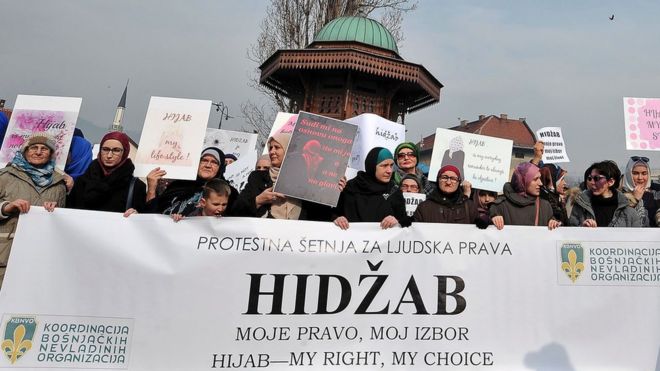
About 2,000 women in Bosnia have protested against a ban on wearing Islamic headscarves in courts and other legal institutions.
The women marched for around an hour through the capital, Sarajevo.
Hijab-wearing was banned by the communist authorities while Bosnia was still part of the former Yugoslavia until 1992, when it declared independence.
The protest came in response to a decision by Bosnia's high judicial council, which supervises the functioning of the judiciary, to ban "religious signs" in judicial institutions.
Some of the women held signs saying "The hijab is my right".

Protest organiser Samira Zunic Velagic said the ban was a "serious attack against Muslim honour, personality and identity" and said it was aimed at depriving Muslim women of their right to work.
The ban has also been condemned by Muslim political and religious leaders.
Muslims make up about 40% of Bosnia's 3.8m population. The others are mostly Orthodox or Catholic Christians
What's the difference between a hijab, niqab and burka?
Hijab, niqab, burka - there are lots of different kinds of coverings worn by Muslim women all over the world.
Some wear a headscarf to cover their head and hair, while others wear a burka or niqab, which also covers up their face.Hijab
The word hijab describes the act of covering up generally but is often used to describe the headscarves worn by Muslim women.
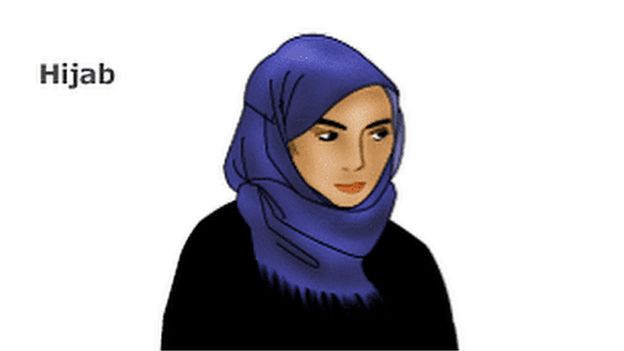
These scarves come in many styles and colours. The type most commonly worn in the West covers the head and neck but leaves the face clear.
Niqab
The niqab is a veil for the face that leaves the area around the eyes clear. However, it may be worn with a separate eye veil.

Burka
The burka is the most concealing of all Islamic veils.
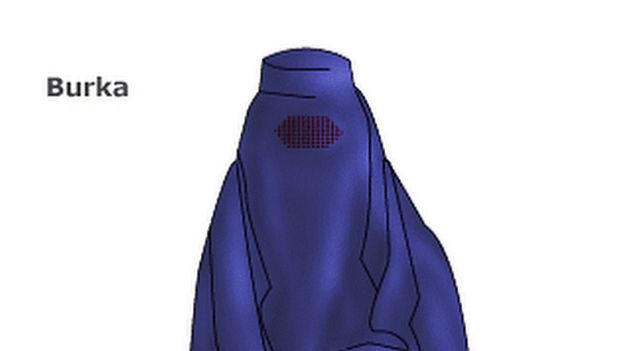
Al-Amira
The al-amira is a two-piece veil. It consists of a close fitting cap, usually made from cotton or polyester, and a tube-like scarf.
The shayla is a long, rectangular scarf popular in the Gulf region.
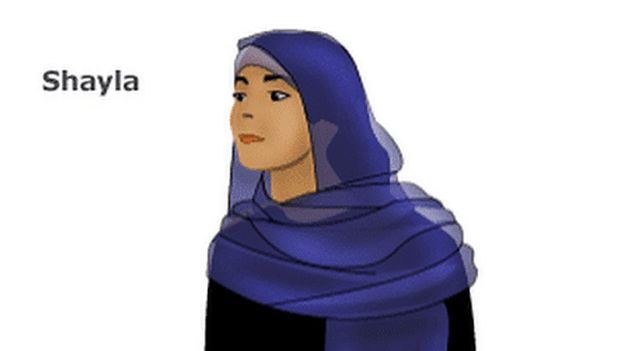
Khimar
The khimar is a long, cape-like veil that hangs down to just above the waist.

The chador, worn by many Iranian women when outside the house, is a full-body cloak.
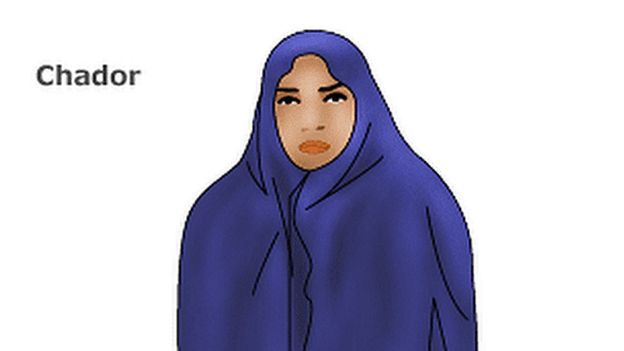
It is often accompanied by a smaller headscarf underneath

No comments:
Post a Comment